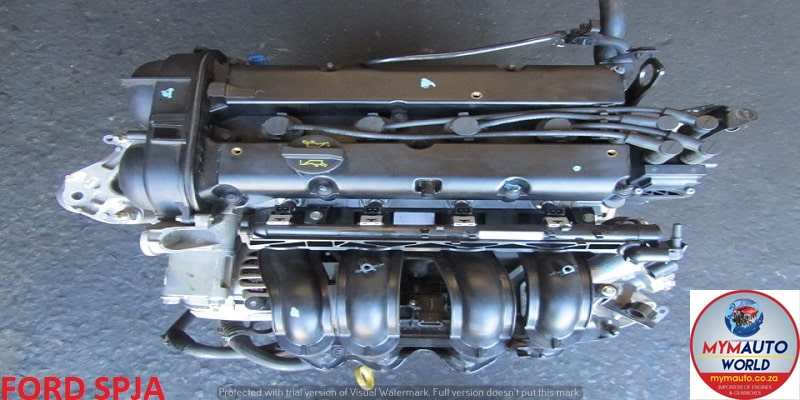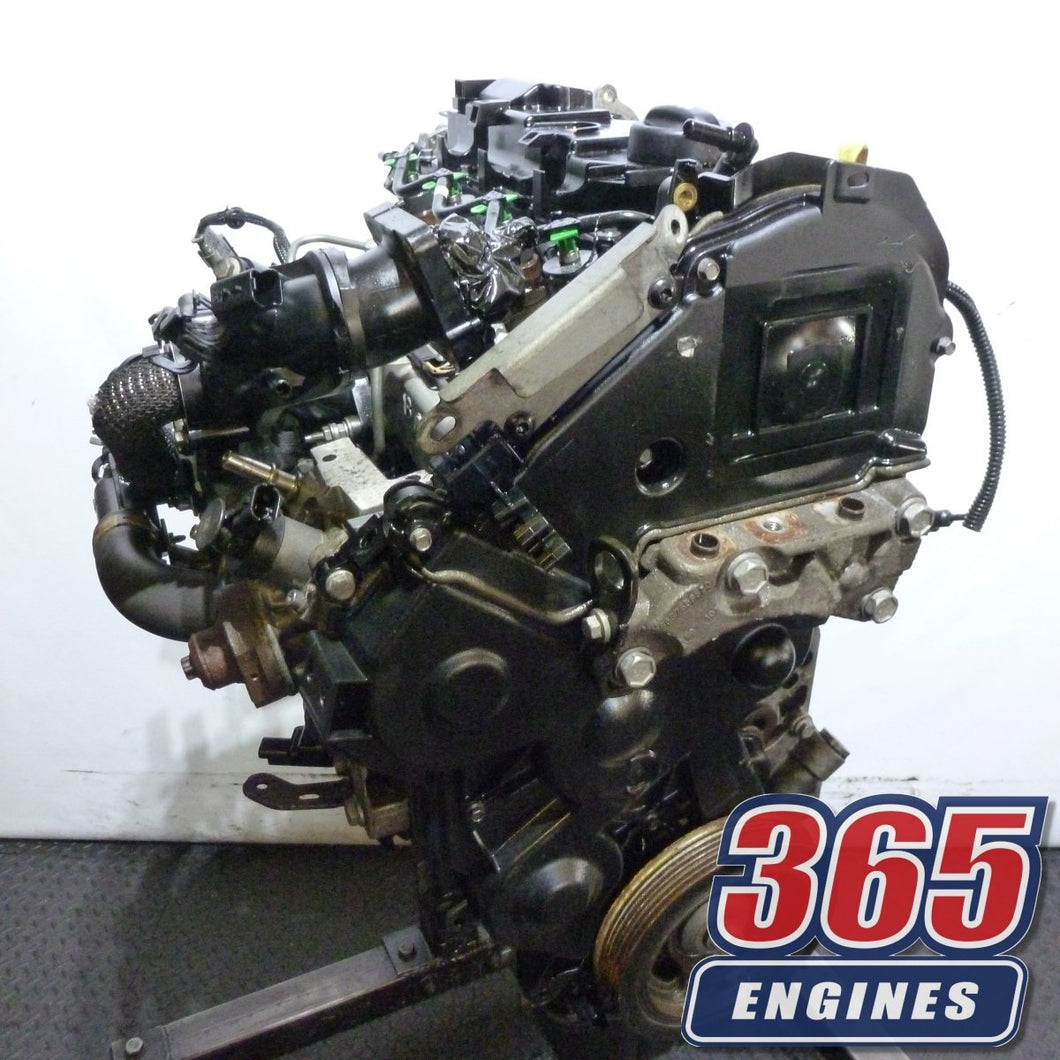Enhance Your Driving Experience with a Reliable Ford Fiesta Engine
Enhance Your Driving Experience with a Reliable Ford Fiesta Engine
Blog Article
Exploring the Evolution of Engines: From Classic Styles to Modern Marvels
The development of engine technology represents a considerable narrative in the background of development, noted by pivotal improvements that have actually consistently redefined transportation and market. From the preliminary vapor engines that powered the Industrial Transformation to the appearance of interior burning engines that changed mobility, each phase has actually added to greater effectiveness and capacity. Presently, the change to electric power signifies not just a technological shift but also a more comprehensive commitment to ecological sustainability. As we check out these landmarks, one need to think about exactly how the future of engine design might unravel, testing our understandings of power and effectiveness.
The Birth of Engine Technology
The arrival of engine modern technology noted a pivotal minute in human advancement, transforming energy conversion and transport. The earliest engines arised from the requirement to harness mechanical power for functional usage, leading to the advancement of tools that transformed various energy kinds right into activity (ford fiesta engine).
The advancement of the inner burning engine and the innovation of the heavy steam engine militarized an extensive change in industrial capabilities. These engines not only enhanced efficiency however also expanded the range of human wheelchair, enabling unmatched transportation opportunities. The early prototypes laid the groundwork for the mechanical globe, helping with the increase of sectors and improving societal frameworks.
As engine designs advanced, they incorporated cutting-edge products and progressed design concepts, leading the way for contemporary developments - ford fiesta engine. The birth of engine modern technology ignited a ruthless pursuit of efficiency and power, establishing the stage for the dynamic evolution of transport and industrial equipment that would certainly adhere to
Heavy Steam Engines and Their Effect

The vapor engine's effect was especially apparent in the transport market (ford fiesta engine). Steam-powered engines promoted the quick activity of items and people across substantial ranges, effectively reducing the geographical obstacles that had previously prevented trade and interaction. In a similar way, steamships changed marine travel, permitting quicker and more trustworthy crossings of rivers and oceans.
In sector, steam engines powered factories, making it possible for automation and the increase of city facilities as centers of financial task. This change not only changed labor characteristics yet additionally added to the introduction of a consumer-driven culture. Additionally, steam modern technology promoted innovations in design and production processes, preparing for future advancements in engine style. The legacy of steam engines is profound, mirroring a zero hour in human ingenuity and the ruthless quest of development.
The Increase of Inner Burning
Regularly outweighing heavy steam power, the rise of inner burning engines marked a transformative change in transportation and market throughout the late 19th and early 20th centuries. The advancement of these engines, identified by their capacity to shed fuel within the engine itself, allowed better effectiveness and power contrasted to typical heavy steam engines. Introducing inventors such Recommended Site as Nikolaus Otto and Rudolf Diesel played essential functions in perfecting engine layouts, bring about widespread adoption in cars, boats, and commercial equipment.
The inner burning engine's compact dimension and fairly lightweight nature assisted in the emergence of personal vehicles, revolutionizing private flexibility and improving metropolitan landscapes. By allowing faster travel and the effective transport of products, these engines militarized financial development and cultivated globalization. The adaptability of gas options, including fuel and diesel, better enhanced their appeal, permitting varied applications throughout various markets.
In spite of the ecological problems that would later occur, the initial appeal of interior combustion innovation lay in its transformative potential. As society embraced this innovation, the structure was laid for modern transport systems, establishing inner combustion engines as a foundation of industrial innovation and day-to-day life throughout the 20th century.
Advancements in Engine Performance
As internal burning engines came to be important to transportation and industry, the focus shifted towards boosting their performance to meet expanding needs for efficiency and sustainability. Innovations in engine layout, material science, and technology have actually substantially added to this development.
One major innovation is the development of turbocharging, which permits raised air intake, resulting in even more total gas combustion and boosted power output without increasing the size of engine size. Furthermore, variable shutoff timing systems have actually been carried out to optimize engine efficiency across different RPM varieties, thereby enhancing fuel performance.
The usage of innovative gas shot innovations, such as straight shot, has also played a crucial function. This approach allows for more accurate control over the fuel-air mixture, advertising far better burning and reducing emissions. In addition, light-weight materials, including aluminum and composite parts, have actually been adopted to lower general engine weight, resulting in boosted effectiveness.
These developments mirror a broader fad within the vehicle industry, where the synergy between engineering development and ecological considerations drives the continuous quest for greater effectiveness in internal burning engines. Consequently, modern-day engines are now a lot more effective, cleaner, and efficient than ever in the past, paving the method for an extra sustainable future in transport.
The Shift to Electric Power
With expanding concerns over environmental influence and nonrenewable fuel source dependency, the automotive industry is experiencing a significant shift towards electric power. This change is driven by a mix of technological developments, governing pressures, and altering customer preferences. Electric cars (EVs) use a compelling alternative to typical internal combustion engines, flaunting decreased greenhouse gas emissions and lower operating expense.
The increase of battery modern technology has been a video game changer, with lithium-ion batteries becoming extra cost-efficient and effective. Boosted power thickness and faster charging capacities have actually made EVs more functional for daily use. Discover More Here Governments worldwide are executing incentives and setting ambitious targets for phasing out fossil gas vehicles, therefore speeding up the fostering of electric power.
Major car manufacturers are spending heavily in r & d, leading to the intro of a diverse array of electrical models. This consists of not only automobile however also business lorries and public transportation services. As charging infrastructure expands and battery modern technology continues to improve, link the change to electric power is poised to reshape the automobile landscape, advertising sustainability and innovation in the years to find. The future of transport is electric, and the energy is indisputable.
Verdict
The development of engine modern technology stands for a significant trajectory of advancement that has actually exceptionally influenced transport and sector. From the foundational heavy steam engines to the transformative inner burning engines, each development has contributed to improved wheelchair and economic development. The present shift toward electrical power emphasizes a crucial dedication to sustainability, driven by improvements in battery technology. This recurring evolution not just mirrors transforming social needs yet additionally highlights the capacity for a cleaner and extra reliable future in engine layout.

Report this page